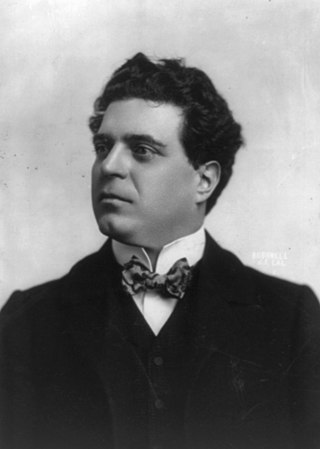
Pietro Mascagni was an Italian composer primarily known for his operas. His 1890 masterpiece Cavalleria rusticana caused one of the greatest sensations in opera history and single-handedly ushered in the Verismo movement in Italian dramatic music. While it was often held that Mascagni, like Ruggero Leoncavallo, was a "one-opera man" who could never repeat his first success, L'amico Fritz and Iris have remained in the repertoire in Europe since their premieres.

Florodora is an Edwardian musical comedy. After its long run in London, it became one of the first successful Broadway musicals of the 20th century. The book was written by Jimmy Davis under the pseudonym Owen Hall, the music was by Leslie Stuart with additional songs by Paul Rubens, and the lyrics were by Edward Boyd-Jones, George Arthurs and Rubens.

Henry Louis Reginald De Koven was an American music critic and prolific composer, particularly of comic operas.

Harry Bache Smith was a writer, lyricist and composer. The most prolific of all American stage writers, he is said to have written over 300 librettos and more than 6000 lyrics. Some of his best-known works were librettos for the composers Victor Herbert and Reginald De Koven. He also wrote the book or lyrics for several versions of the Ziegfeld Follies.

Arthur Reed Ropes, better known under the pseudonym Adrian Ross, was a prolific writer of lyrics, contributing songs to more than sixty British musical comedies in the late 19th and early 20th centuries. He was the most important lyricist of the British stage during a career that spanned five decades. At a time when few shows had long runs, nineteen of his West End shows ran for over 400 performances.

Félix Marie Henri Tilkin, better known by his pen name Ivan Caryll, was a Belgian-born composer of operettas and Edwardian musical comedies in the English language, who made his career in London and later New York. He composed some forty musical comedies and operettas.

The Knickerbocker Theatre, previously known as Abbey's Theatre and Henry Abbey's Theatre, was a Broadway theatre located at 1396 Broadway in New York City. It operated from 1893 to 1930. In 1906, the theatre introduced the first moving electrical sign on Broadway to advertise its productions.
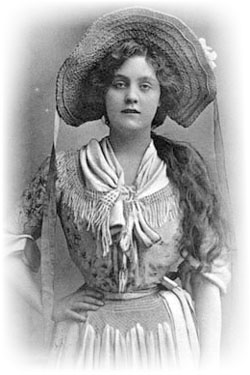
Edith Elizabeth "Evie" Greene was a much-photographed English actress and singer who played in Edwardian musical comedies in London and on Broadway. She starred as Dolores in the international hit musical Florodora. She also sang on the world's first original cast album, recorded for that musical.

Edwardian musical comedy was a form of British musical theatre that extended beyond the reign of King Edward VII in both directions, beginning in the early 1890s, when the Gilbert and Sullivan operas' dominance had ended, until the rise of the American musicals by Jerome Kern, Rodgers and Hart, George Gershwin and Cole Porter following the First World War.

Margaret Florence Greig, known by her stage name Florence St. John, was an English singer and actress of the late Victorian and Edwardian eras famous for her roles in operetta, musical burlesque, music hall, opera and, later, comic plays.

Isabelle Urquhart was an American contralto and actress, noted for her performances in comic opera and musical comedy. She was "one of the reigning queens of comic opera".
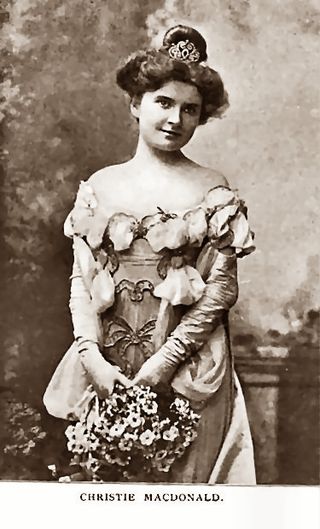
Christie MacDonald was a Canadian-born American musical comedy actress and opera singer. She was perhaps best remembered as the Princess of Bozena in the 1910 operetta Spring Maid. The 1913 musical Sweethearts specifically was written for MacDonald by composer Victor Herbert. She retired from the stage after appearing in a 1920 revival of the musical comedy Florodora.
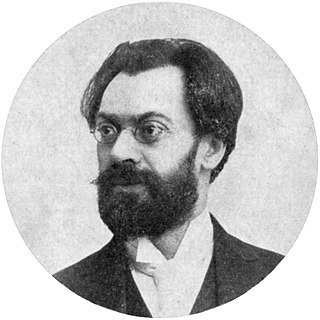
Ludwig Engländer was an Austrian-born American composer of more than 30 musicals.
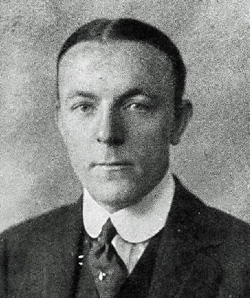
George Windsor Graves was an English comic actor. Although he could neither sing nor dance, he became a leading comedian in musical comedies, adapting the French and Viennese opéra-bouffe style of light comic relief into a broader comedy popular with English audiences of the period. His comic portrayals did much to ensure the West End success of Véronique (1904) The Little Michus, and The Merry Widow (1907).

The Herald Square Theatre was a Broadway theatre in Manhattan, New York City, built in 1883 and closed in 1914. The site is now a highrise designed by H. Craig Severance.
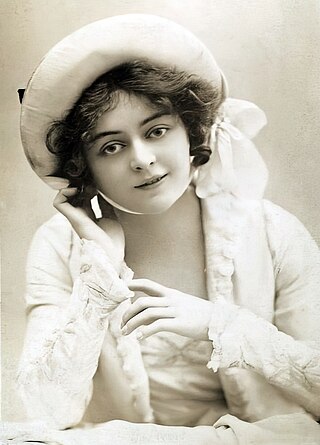
Adrienne Adele Augarde was an English actress and singer popular for nearly a decade on both sides of the Atlantic Ocean, primarily for her roles in Edwardian musical comedy.
Max Freeman was a German actor, theater director, theater manager, playwright, and producer who was primarily active in the United States. After beginning his career in his native city of Berlin in 1868, Freeman eventually moved to the United States in 1871 where he began his career in America as the theatre manager for the Germania Theatre in New York City. He had a lengthy stage career as an actor in America from 1873 until his death in 1912. Known as the "godfather of comic opera", he particularly excelled in performances in roles from light operas and musical comedies, and was also responsible for directing and producing works from this genre on Broadway. He also directed and played parts in straight plays as well. His adaptation of Jacques Offenbach's Orfée aux enfers was performed for the grand opening of Broadway's Bijou Theatre in 1883, and his original musical play Claudius Nero, based on Ernest Erkstein's novel Nero, premiered at Niblo's Garden in 1890.

Madge Lessing was a British stage actress and singer, panto principal boy and postcard beauty of Edwardian musical comedy who had a successful career in the West End in London, Europe and on Broadway from 1890 to 1921 and who made a number of early film appearances in Germany for director Max Mack.
Nancy McCord was an American soprano and actress who had an active career in opera, musical theatre, and vaudeville during the 1920s, 1930s and early 1940s. She appeared in operettas and musicals on Broadway and in operas with several American companies, including the St. Louis Municipal Opera and the Metropolitan Opera. Her repertoire consisted mainly of roles from light opera and operettas. She is best remembered for creating the roles of Marie-Baroness von Schlewitz in the original production of Oscar Hammerstein II and Sigmund Romberg's May Wine (1935); and Mary Stone in the world premiere of Douglas Moore's The Devil and Daniel Webster (1939). She also performed leading roles in the United States premieres of two operettas: Franz Lehár's The Land of Smiles and Robert Stolz's Venus in Seide.

Louis Harrison was an actor, playwright, comedian, lyricist, librettist, and theatre director. As both a performer and playwright, he was mainly active within the genres of musical theatre and light opera.






















